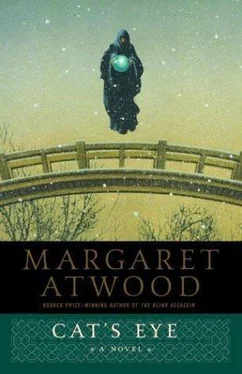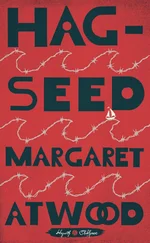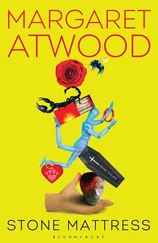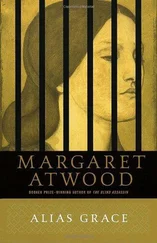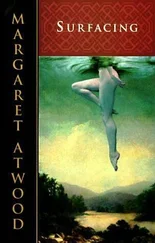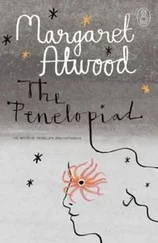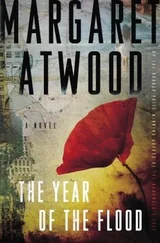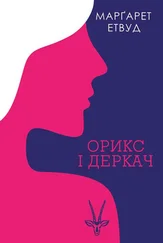Margaret Atwood - Cat's eye
Здесь есть возможность читать онлайн «Margaret Atwood - Cat's eye» весь текст электронной книги совершенно бесплатно (целиком полную версию без сокращений). В некоторых случаях можно слушать аудио, скачать через торрент в формате fb2 и присутствует краткое содержание. Жанр: Старинная литература, на английском языке. Описание произведения, (предисловие) а так же отзывы посетителей доступны на портале библиотеки ЛибКат.
- Название:Cat's eye
- Автор:
- Жанр:
- Год:неизвестен
- ISBN:нет данных
- Рейтинг книги:5 / 5. Голосов: 1
-
Избранное:Добавить в избранное
- Отзывы:
-
Ваша оценка:
- 100
- 1
- 2
- 3
- 4
- 5
Cat's eye: краткое содержание, описание и аннотация
Предлагаем к чтению аннотацию, описание, краткое содержание или предисловие (зависит от того, что написал сам автор книги «Cat's eye»). Если вы не нашли необходимую информацию о книге — напишите в комментариях, мы постараемся отыскать её.
Cat's eye — читать онлайн бесплатно полную книгу (весь текст) целиком
Ниже представлен текст книги, разбитый по страницам. Система сохранения места последней прочитанной страницы, позволяет с удобством читать онлайн бесплатно книгу «Cat's eye», без необходимости каждый раз заново искать на чём Вы остановились. Поставьте закладку, и сможете в любой момент перейти на страницу, на которой закончили чтение.
Интервал:
Закладка:
Things are being said that I have never consciously thought about before. Things are being overthrown. Why, for instance, do we shave our legs? Wear lipstick? Dress up in slinky clothing? Alter our shapes?
What is wrong with us the way we are?
It’s Jody asking these questions, one of the other painters. She does not dress up or alter her shape. She wears workboots, and striped coveralls, one leg of which she hauls up to show us the real leg underneath, which is defiantly, resplendently hairy. I think of my own cowardly, naked legs, and feel brainwashed, because I know I cannot go all the way. I draw the line at armpits. What is wrong with us the way we are is men.
Many things are said about men. Two of these women have been raped, for instance. One has been beaten up. Others have been discriminated against at work, passed over or ignored; or their art has been ridiculed, dismissed as too feminine. Others have begun to compare their salaries with those of men, and have found them to be less.
I have no doubt that all of these things are true. Rapists exist, and those who molest children and strangle girls. They exist in the shadows, like the sinister men who lurk in ravines, not one of whom I have ever seen. They are violent, wage wars, commit murders. They do less work and make more money. They shove the housework off on women.
They are insensitive and refuse to confront their own emotions. They are easily fooled, and wish to be: for instance, with a few gasps and wheezes they can be conned into thinking they are sexual supermen. There are giggles of recognition over this. I begin to wonder if I’ve been faking orgasm without knowing it.
But I am on shaky ground, in this testifying against men, because I live with one. Women like me, with a husband, a child, have been referred to with some scorn as nukes, for nuclear family. Pronatalist is suddenly a bad word. There are some other nukes in this group, but they are not in the majority and say nothing in their own defence. It seems to be worthier to be a woman with a child but no man. That way you’ve paid your dues. If you stay with the man, whatever problems you are having are your own fault. None of this is actually said.
These meetings are supposed to make me feel more powerful, and in some ways they do. Rage can move mountains. In addition, they amaze me: it’s shocking, and exciting, to hear such things emerging from the mouths of women. I begin to think that women I have thought were stupid, or wimps, may simply have been hiding things, as I was.
But these meetings also make me nervous, and I don’t understand why. I don’t say much, I am awkward and uncertain, because whatever I do say might be the wrong thing. I have not suffered enough, I haven’t paid my dues, I have no right to speak. I feel as if I’m standing outside a closed door while decisions are being made, disapproving judgments are being pronounced, inside, about me. At the same time I want to please.
Sisterhood is a difficult concept for me, I tell myself, because I never had a sister. Brotherhood is not. I work at night, when Sarah is asleep, or in the early morning. Right now I am painting the Virgin Mary. I paint her in blue, with the usual white veil, but with the head of a lioness. Christ lies in her lap in the form of a cub. If Christ is a lion, as he is in traditional iconography, why wouldn’t the Virgin Mary be a lioness? Anyway it seems to me more accurate about motherhood than the old bloodless milk-and-water Virgins of art history. My Virgin Mary is fierce, alert to danger, wild. She stares levely out at the viewer with her yellow lion’s eyes. A gnawed bone lies at her feet.
I paint the Virgin Mary descending to the earth, which is covered with snow and slush. She is wearing a winter coat over her blue robe, and has a purse slung over her shoulder. She’s carrying two brown paper bags full of groceries. Several things have fallen from the bags: an egg, an onion, an apple. She looks tired.
Our Lady of Perpetual Help , I call her.
Jon does not like me painting at night. “When else can I do it?” I say. “You tell me.” There is only one answer, one that would not involve the loss of his own time: Don’t do it at all. But he doesn’t say this. He doesn’t say what he thinks of my paintings, but I know anyway. He thinks they are irrelevant. In his mind, what I paint is lumped in with the women who paint flowers. Lumped is the word. The present tense is moving forward, discarding concept after concept, and I am off to the side somewhere, fiddling with egg tempera and flat surfaces, as if the twentieth century has never happened. There is freedom in this: because it doesn’t matter what I do, I can do what I like. We have begun to slam doors, and to throw things. I throw my purse, an ashtray, a package of chocolate chips, which breaks on impact. We are picking up chocolate chips for days. Jon throws a glass of milk, the milk, not the glass: he knows his own strength, as I do not. He throws a box of Cheerios, unopened. The things I throw miss, although they are worse things. The things he throws hit, but are harmless. I begin to see how the line is crossed, between histrionics and murder. Jon smashes things, and glues the shards into place in the pattern of breakage. I can see the appeal. Jon sits in the living room, having a beer with one of the painters. I am in the kitchen, slamming around the pots.
“What’s with her?” says the painter.
“She’s mad because she’s a woman,” Jon says. This is something I haven’t heard for years, not since high school. Once it was a shaming thing to say, and crushing to have it said about you, by a man. It implied oddness, deformity, sexual malfunction.
I go to the living room doorway. “I’m not mad because I’m a woman,” I say. “I’m mad because you’re an asshole.”
Chapter 62
S ome of us from the meetings are having a group show, of women only. This is risky business, and we know it. Jody says we could get trashed, by the male art establishment. Their line these days is that great art transcends gender. Jody’s line is that art so far has been mostly men admiring one another. A woman artist can get admired by them only as a sideline, a sort of freaky exception. “Titless wonders,” says Jody.
We could get trashed by women as well, for singling ourselves out, putting ourselves forward. We could be called elitist. There are many pitfalls.
There are four of us in on the show. Carolyn, who has an angelic moon face framed in a Dutch cut with dark bangs, calls herself a fabric artist. Some of her pieces are patchwork quilts, in inventive designs. One has condoms stuffed with tampons (unused), glued onto it in the shapes of letters, spelling out WHAT IS LUV? Another is done in florals, with an appliquéd message:
UP YOUR
MAN
IFESTO!
Or else she makes wall hangings out of toilet paper twisted like rope, braided and woven with reels of outdated girlie movies, the kind that used to be called “art films.” “Used porn,” she says cheerfully. “Why not recycle it, eh?”
Jody does store mannequins, sawn apart, the pieces glued back together in disturbing poses. She, fixes them up with paint and collage and steel wool stuck on at appropriate places. One hangs from a meat hook, stuck through the solar plexus, another has trees and flowers painted all over her face like fine tattooing, with a delicacy I wouldn’t have suspected from Jody. Another has the heads of six or seven old dolls attached to her stomach. I recognize some of them: Sparkle Plenty, Betsy Wetsy, Barbara Ann Scott.
Zillah is blond and skimpy, like the frail flower girls of a few years back. She calls her pieces Lintscapes. They are made from the wads of feltlike fuzz that accumulate on drier filters and can be peeled off in sheets. I have admired these myself as I stuffed them into the wastebasket: their texture, their soft colors. Zillah has bought a number of towels in different shades and run them repeatedly through the dryer, to get shades of pink, of gray-green, of off-white, as well as the standard underneath-the-bed gray. These she has cut and shaped and glued carefully to a backing, to form multilayered compositions that resemble cloudscapes. I am entranced by them, and wish I had thought of this first. “It’s like making a soufflé,”
Читать дальшеИнтервал:
Закладка:
Похожие книги на «Cat's eye»
Представляем Вашему вниманию похожие книги на «Cat's eye» списком для выбора. Мы отобрали схожую по названию и смыслу литературу в надежде предоставить читателям больше вариантов отыскать новые, интересные, ещё непрочитанные произведения.
Обсуждение, отзывы о книге «Cat's eye» и просто собственные мнения читателей. Оставьте ваши комментарии, напишите, что Вы думаете о произведении, его смысле или главных героях. Укажите что конкретно понравилось, а что нет, и почему Вы так считаете.
